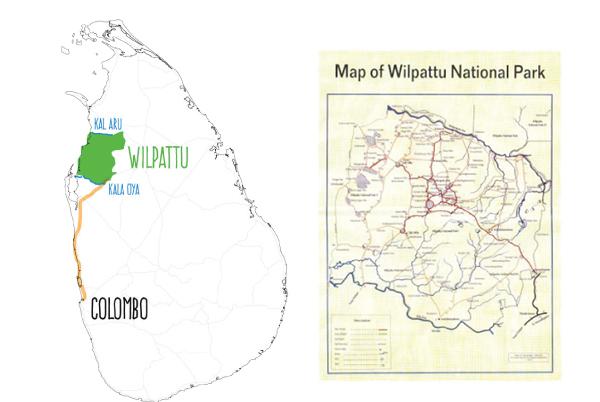
Wilpattu is the largest national park in Sri Lanka and was declared a National Park in 1938. It is located in the Northern Province just before Mannar and is 185 km from Colombo. The turn off to the park is at the village of Thimbiriwewa on the 28th milepost on the Puttalam – Anuradhapura road.
The Park office is at Hunuwilagama, a distance of eight kilometers from the turn off. The park has many villus or lakes and it is from these that the park gets its name, Wilpattu. It is a combination of two words, willu meaning lake and pattu meaning land. The western area of the park has dense, forested areas and thorny bushes very much like another great park in southern Sri Lanka, Yala. Weather wise Wilpattu has inter monsoonal rains in March and April and heavy rains from the Northern monsoon from September to December. From May until December it is drought time for Wilpattu and sometimes owing to this the park may be closed to visitors. Elephants, leopards, the Sri Lankan sloth bear, water buffaloe, deer and samhbur, and monkeys are among the many species of animals found at Wilpattu. Painted storks, Sri Lanka jungle fowl , garganey, whistling teal and ibis are among the birds who make their home at Wilpattu.
A section of the park has a very varied, copper red, loamy soils which are very striking. The famous Kudiramali Point is within the park and has this copper coloured soil. The Tamil name Kudiramalai (horse mountain) is taken from the shape of the place. Legend has it that there was a massive statue of a horse here. It is said that it is in this area that Prince VIjaya landed and named it Tambapanni due to its copper red soil.
The ruins of the Yaksha princess Kuveni’s palace is als believed to be in the area of Wilpattu at a place called Kali villu.
King Dutugamunu’s son, Saliya is said to have lived here over 2,000 years ago.
Sources: Wilpattu web site, Mahoora, Explore Sri Lanka,

